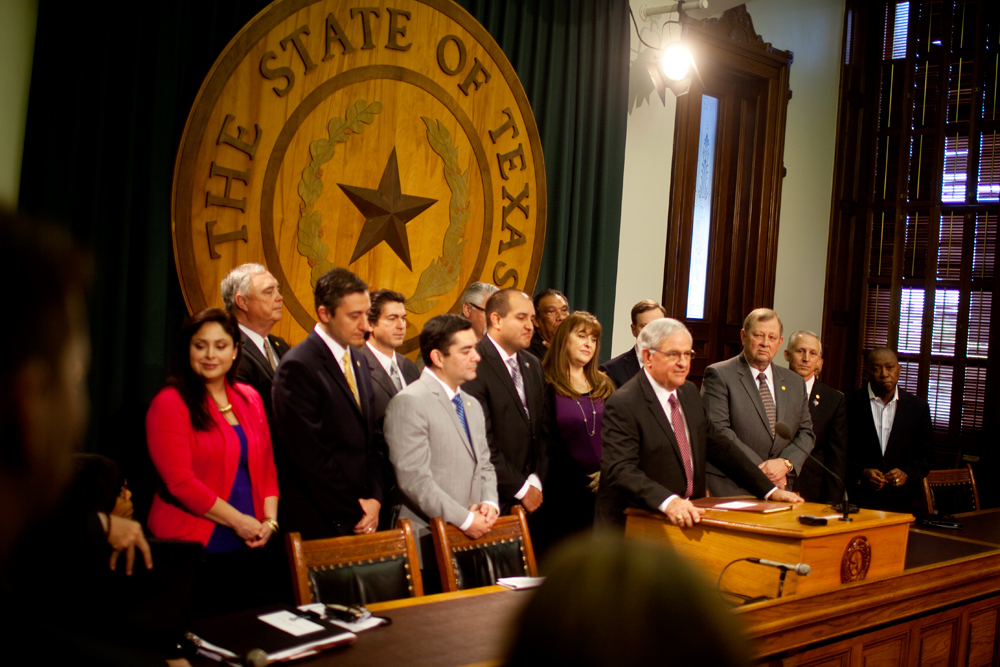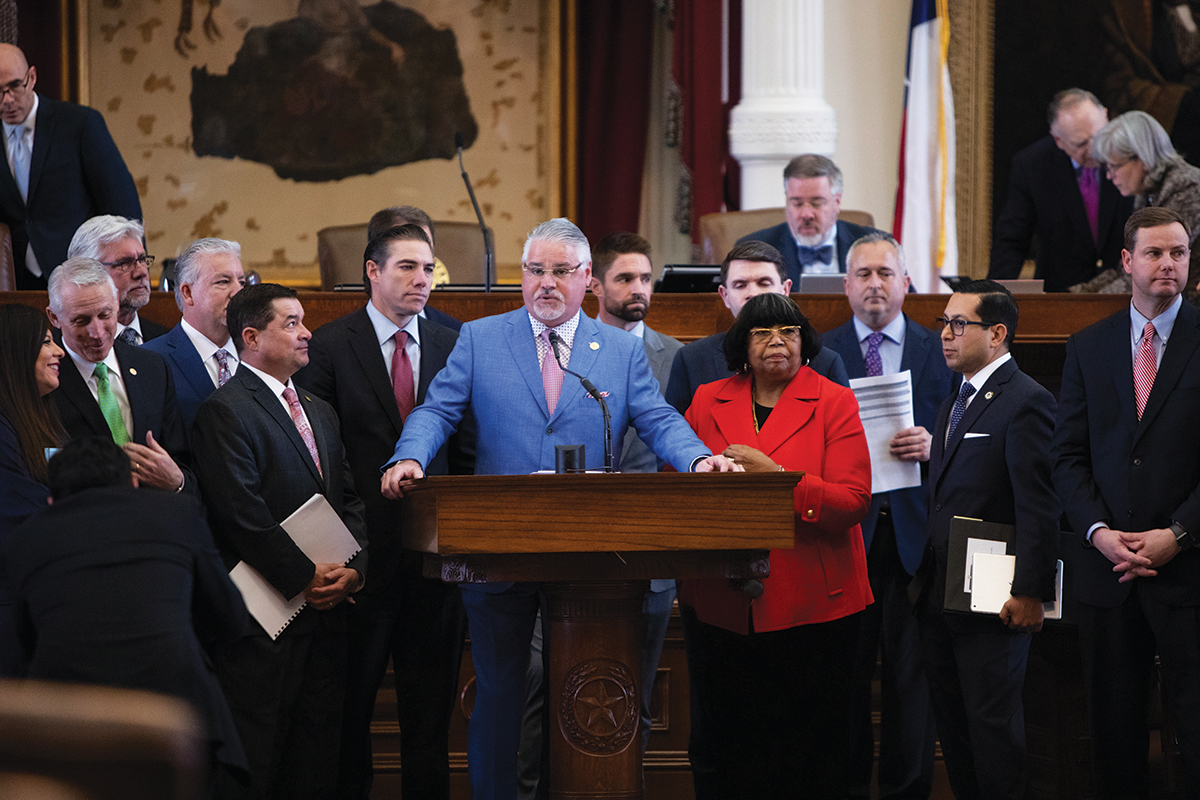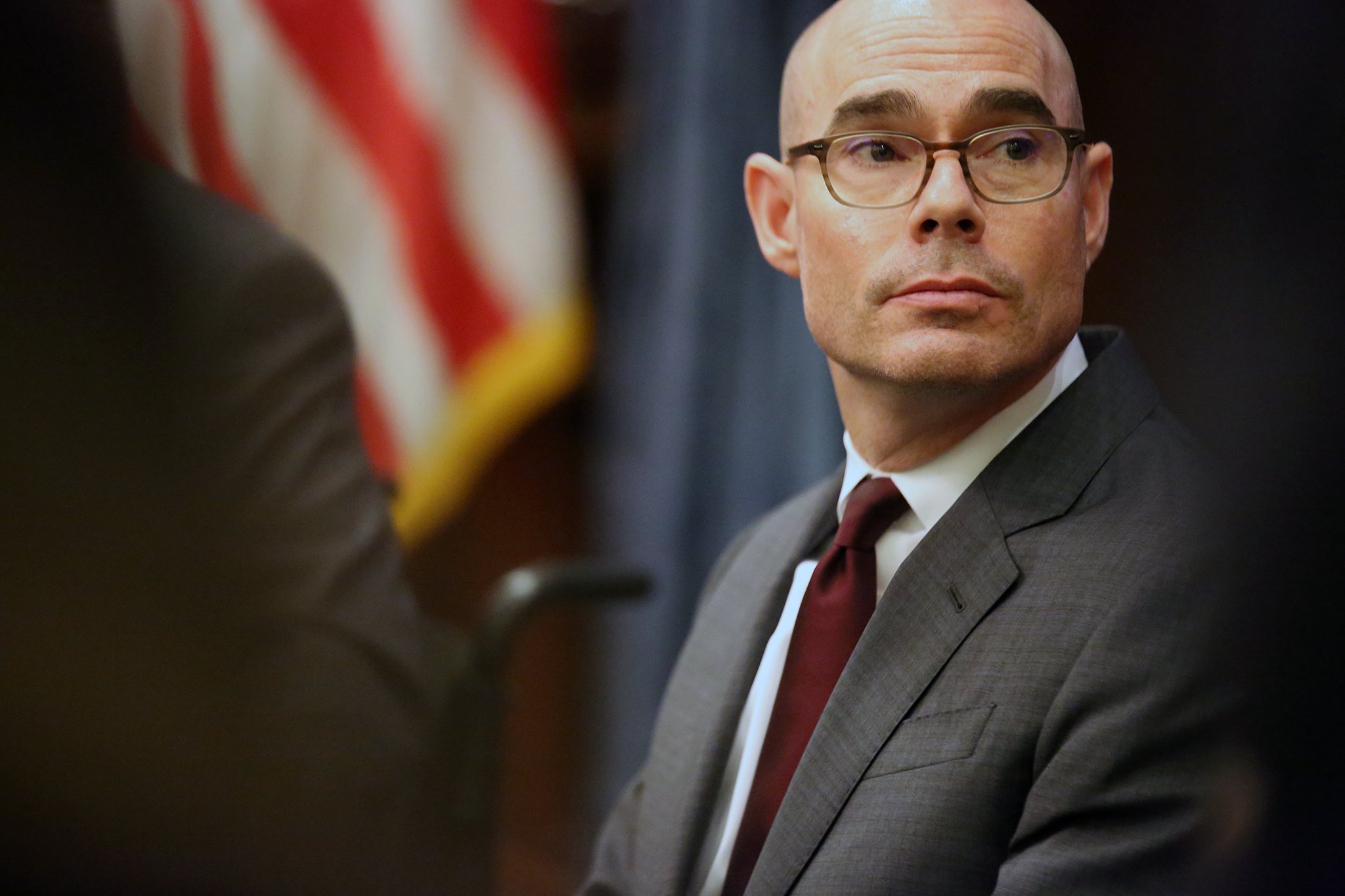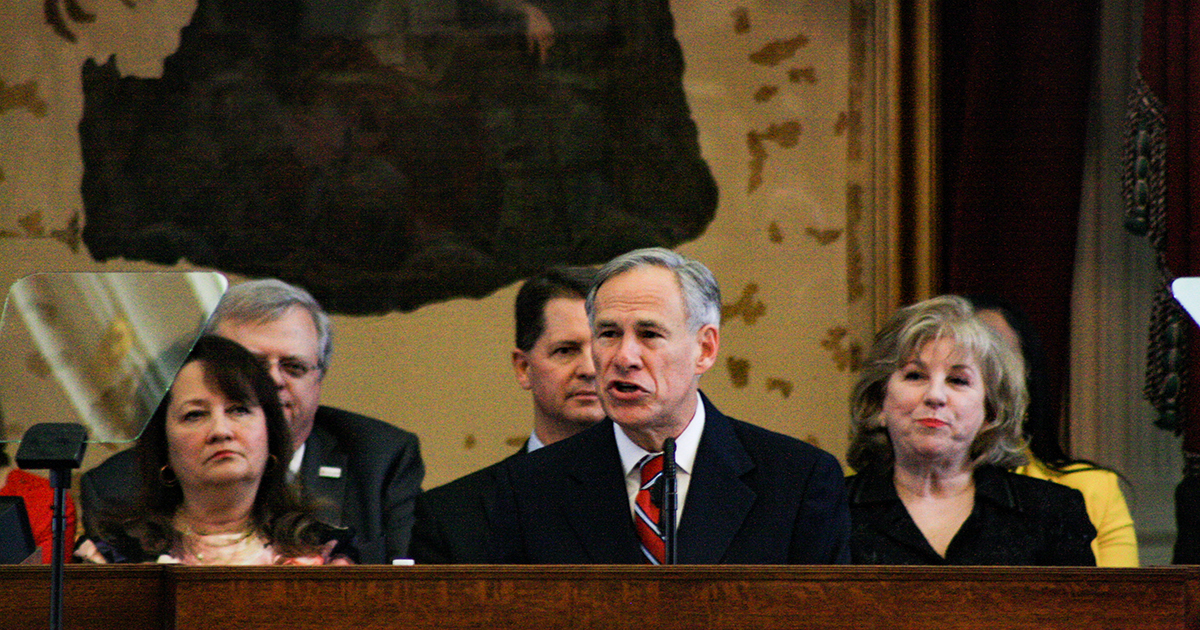
Is This the Complicated Answer to Our Even More Complicated School Finance System?

Above: House Public Education Committee Chairman Jimmie Don Aycock (R-Killeen) with House members last month.
Two weeks after announcing that he’d try to fix the school finance system in the current legislative session, House Public Education Chairman Jimmie Don Ayocck (R-Killeen) unveiled his plan in a committee hearing this afternoon. Aycock had already announced his plan would come with $800 million in new money; today he explained how it would work.
Like most things in school finance, it’s complicated stuff. You can read the details of his plan, and its projected effects on your favorite school district, here.
Generally speaking, Aycock’s proposal involves scrapping a number of outdated or impractical funding tools—the “Cost of Education Index,” for instance, is 24 years old and has never been updated—and putting all of that money into the basic per-student allotment.
“Part of my objective when I began this was to simplify this system that we’re in,” Aycock said as he explained his bill, later adding, “I wish I could make it simpler. It’s not a simple deal.”
Any tweaks to the school finance system would ripple out across Texas’ thousand-plus school districts in different ways. (Aycock said that modeling his possible fixes “literally crashed” a state computer.) To minimize the number of districts losing money under the proposal, the House has passed a budget with $3 billion in new spending for public schools—including $2.2 billion that budget writers agreed upon early in the session, and $800 million more announced as part of Aycock’s plan.
The Senate draft budget includes much less for schools, and Aycock has said his counterparts in the upper chamber haven’t been a part of the House school finance talks. If the Senate doesn’t sign to match the House’s proposal, Aycock said his restructuring must be scuttled too.
Without new money, he said, “the pain of making these changes would be insurmountable.”
But there are new and different sorts of pain in store if the Legislature does nothing.
For one, under the current system, Houston ISD will soon owe the state around $100 million in “Robing Hood” funding—money that wealthy districts pay the state to cover poorer ones. Aycock has mentioned this point repeatedly, saying Houston ISD would either have to cut its services or raise taxes to cover the cost—or both—and get its voters to agree to foot the bill.
For another, many school districts are about to get a whole lot less from the state after September 2017. That’s when a relic of the last school finance “fix” in 2006 will expire, and a whole bunch of districts whose funding has been artificially inflated, by a tool known as ASATR, will watch their funding deflate in a hurry. Aycock conveyed the point with a different image today: “We’re going to hit a cliff at that point, and we’re going to hit it at 100 miles per hour,” he said.
His bill would move all but 2 percent of school districts off that artificial funding mechanism and onto formula funding, which is generally more stable. “Those that do fall in ’18 fall a lot less,” he said. “When they fall off that cliff, they don’t fall as far.”
Since 2006, as Abby Rapoport explained in the Observer a few years back, ASATR has been a finger on the scales that has persistently privileged some districts over others in some weird and unfair ways. Moving all but 2 percent of districts onto formula funding instead makes the system more fair.
That question of equity isn’t just important for students in those districts. It’s a central issue in the ongoing school finance case that the Texas Supreme Court is set to take up months from now. Rep. Donna Howard (D-Austin) has said that Aycock’s proposal would mean new money for schools, but she doubts it would do enough for poor students or English-language learners to make the system truly equitable.
That was a major issue in District Judge John Dietz’s ruling against the state last year, and Aycock said this afternoon that his bill didn’t touch the funding weights that provide money for those students. But he did call his plan “the most equitable statistical sample that’s been proposed for many years,” and said, “I honestly move it helps the state’s position, moves the ball in the right direction.”
He went even further with reporters after the hearing:
Chair @Aycockjda says he thinks his school finance bill will make sure lawsuit is "reversed or remanded" #txlege #txed
— Lauren McGaughy (@lmcgaughy) April 7, 2015
.@Aycockjda just told reporters he thinks his plan, if it passes, would make the current school finance lawsuit go away #txlege
— Kiah Collier (@KiahCollier) April 7, 2015
The committee will hear public testimony on the bill next Tuesday.


